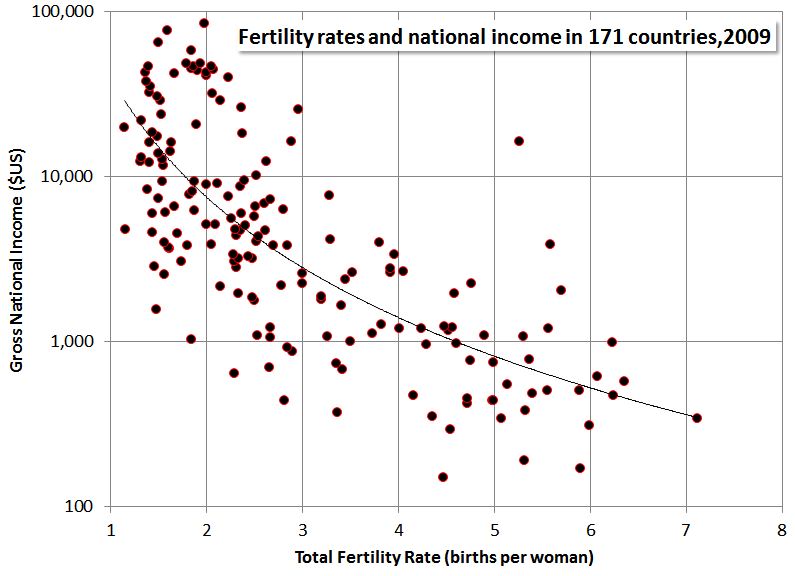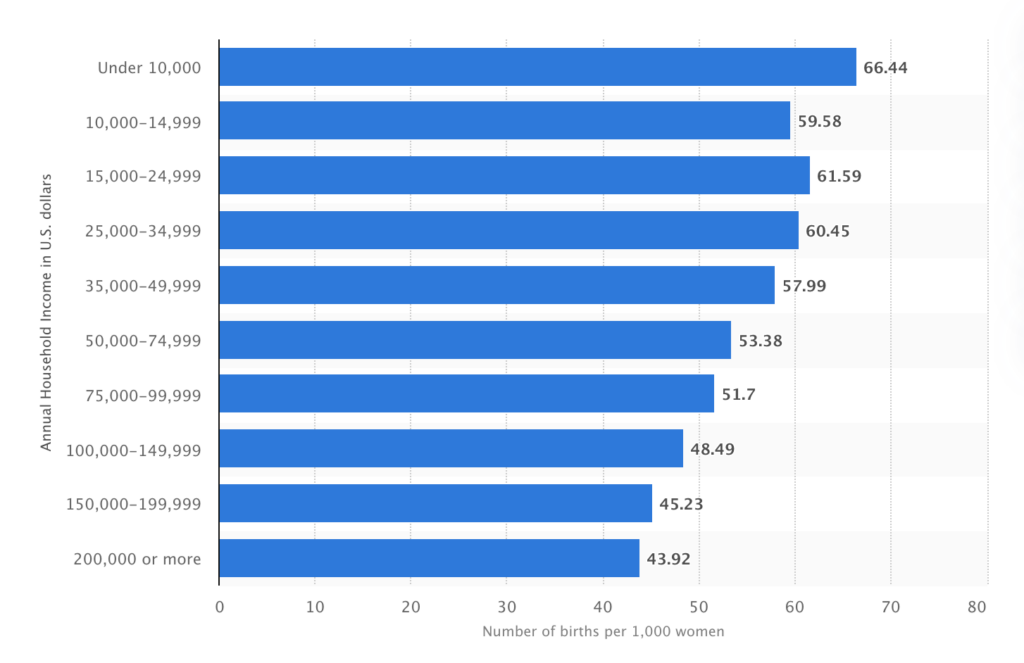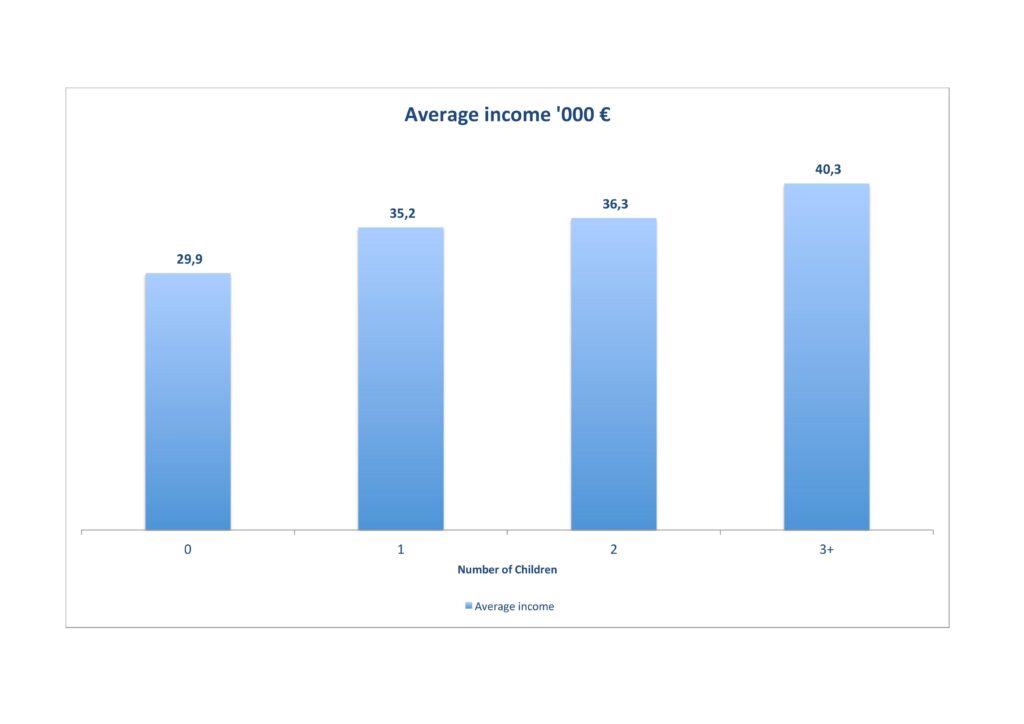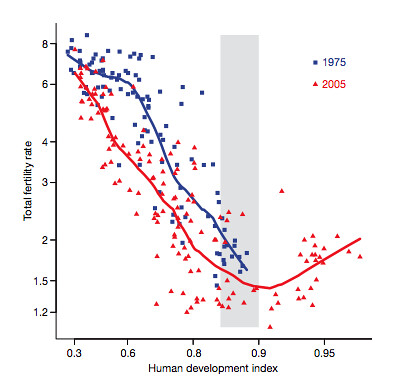The classic view

An article on money and babies, else the relationship between prosperity and fertility. We have all grown accustomed to one of the fundamental tenets of macroeconomy: as countries grow richer, fertility rates drop.
The exact reason why this happens is mostly speculative but has to do with less dependance on human labour and thus less incentive to have large families once economies transition away from farming into industry and services and living conditions improve and reduce mortality rates among children.
I will argue that comparing across different nations, societies and continents leaves a lot of statistical confounders in the pictures: religious beliefs, higher or lower overall fertility for certain countries vs others, economic prosperity specific to a country or a region.
A more modern approach
So let’s zoom in and see what happens at a country level choosing the US where data is easily available.

Well, the picture does not seem to change much at all. Beyond a slight anomaly of the bracket 10-15k €, the richer the household, the fewer the children. So money and babies appear to still be negatively correlated: prosperity adversely effects fertility.
So the drop in fertility with prosperity seems to also affect developed economies and even within the same economy people with more money tend to have less children.
Now this seems rather counterintuitive, at least in modern developed economies that require so much effort to take children to economic independence.
I thus tried to pull out the same stats for Italy that I found for the US but couldn’t find classes of income charted against family demographics. I did find evidence with Istat of average income growing with family size

Similarly someone else had fun charting income and children by municipality (Comune) for the entire country. It shows strong evidence of children and income being again positively correlated.

So the richer the fewer babies does not necessarily hold true in developed economies. Studies that have isolated the effect of a sudden rise in income on the propensity to have children have found the same evidence: an unexpected economic windfall leads to an increased likelihood of having another child.
The J curve anomaly
Going back to Italy and the relationship between money and babies and charting the historic decrease of number of children against the historic march of average Gdp per person, we observe another well known phenomenon: the onset of a J curve, or an uptake of fertility for higher levels of income

For a more general J-curve at country level we need to adopt instead of GDP UN’s Human Development Index or HDI. In this case as conditions improve above a certain threshold we see that fertility going back into black territory, following prosperity. Money and babies are again positively correlated.

After all, it’s rather intuitive. Or is it not? 😀
For more article blogs.
